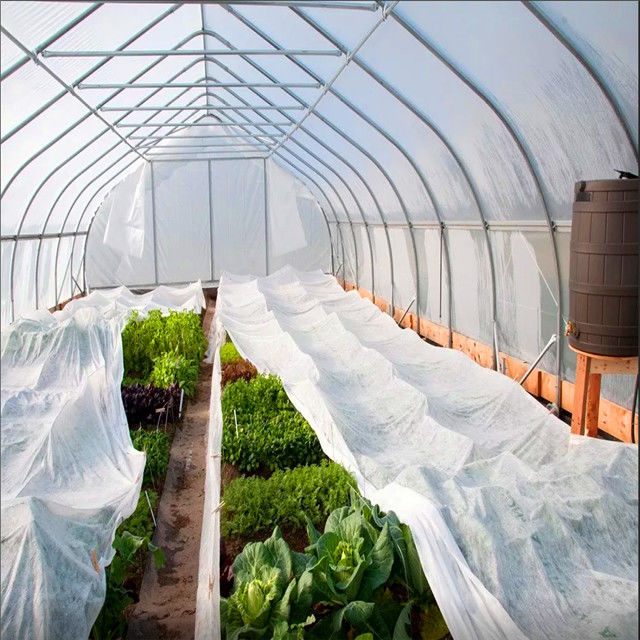Non-Woven Fabric Characteristics And Its Uses In Agriculture
Since the beginning of the petrochemical era, non-woven fabrics have been created. Non-woven fabrics were initially used because of their softness and bulk in packaging and covering, filling and other applications. The usage of non-woven fabric has expanded to encompass civil engineering, environmental engineering and agriculture. Its presence is everywhere, with a particular emphasis on its early applications in the agricultural sector. Non-woven fabric is a similar material that is made of short or long fibers. These materials have been joined by heat as well as chemical treatment. The general rule is that woven fabric are more durable and durable than non-woven ones. Non-woven fabrics are used in many industries. There are a variety of non-woven materials. Non-woven fabrics have less production hurdles than woven fabrics. The market for nonwoven fabrics and the industries are growing and developing. Check out this pp agricultural nonwoven fabric for tips.
Non-Woven Industries Growth. Nonwoven fabrics are produced by the petrochemical industries after the development of plastic fabric (film). In comparison to plastic cloth, it is lighter and provides good air circulation. It is commonly employed in medical, sanitary and filtering products and also in engineering applications, such as sanitary napkins, facial towels and filters. Non-woven fabric is used in vegetable production for protection against cold-related damage. Non-woven fabrics are produced differently from plastic films. But the fundamental ingredients used in their production are similar. They include PVC (polyvinyl chloride), PET (polyethylene), EVA [Ethylene Vinyl Acetate copolymer], PVA (polyvinyl alcohol) etc. By inflating the traditional plastic film using heat, it produces thin film. The film is continuous. The material is able to stretch indefinitely. The film's surface does not have any pores. It is an impermeable material which blocks all movement and exchange of molecules. Artificial chemical fibers, fabricated of the mentioned raw materials, became the most sought-after product in the industry of textiles. They can be transformed into cloth by traditional warp and weave weaving. In contrast to traditional warp and weft techniques non-woven materials are created by interweaving fibers from different directions. It is more durable than traditional woven fabric and is made of raw materials in one day. It's less expensive than traditional weaving, which involves drawing fibers into yarn and weaving. The last few years have seen a wide range of non-woven fabrics used in the apparel industry. The development of production technology and improved material science have made non-woven materials more adaptable and extensively used in the past few years. There are many different materials and products encountered in everyday life. The rise in non-woven fabric usage in agriculture is due to its lightness, ease-of-production and versatility, as well as its cost-effective and wide variety of uses. See this non woven weed control fabric for more info.

Non-woven materials for the Agricultural Industry. Non-woven textiles were first used in Europe for agriculture in 1978. It was done to keep the carrots cool so that they could be harvested earlier and to combat tomatoes leaf virus. In the United States non-woven fabrics are employed to mulch cantaloupes, sweet peppers, tomatoes roots, carrots, root vegetables and radishes, cabbage lettuce, and other vegetables. They are mostly used for heat preservation, early harvesting, and for insect control. Non-woven materials have the ability to raise soil temperature and retain water well and are utilized for grass-proof mats. The creation of water-absorbing blankets made from short fiber can be applied to nursery bedding to ensure the roots are able take in all the water. They can also serve as the primary medium for the turf production process. They can also be used as planting bags for large woody plants like fruit trees and trees for gardens, preventing weeds and retaining the moisture. Non-woven fabrics are also employed as crop cover in Taiwan. They are also used extensively to cut down on energy use in greenhouses with large areas. Canopy curtains and double-layered cover reduce heat dissipation and radiation at night. TAVIK fabrics are non-woven spun-bonded non-woven TAVIK fabric with high densities were first utilized for shading and protecting cauliflower bulbs. The low thermal conductivity, high shading ability and easy recycleability soon made it popular among farmers. Later, it was used to protect leaf vegetables as well as their insect-proof cultivation. Then it was utilized for shading, heating, and protect fruit trees and pineapples. Due to Taiwan's unique climate and ecology the development of the industry in non-woven has been slow. Taiwan non-woven fabric manufacturers continue to develop non-woven technologies and focus on air permeability, water absorption, and water repellency of non-woven materials. The focus is now on preservation and storage for agricultural products. Follow this pp agricultural nonwoven fabric for more info.
